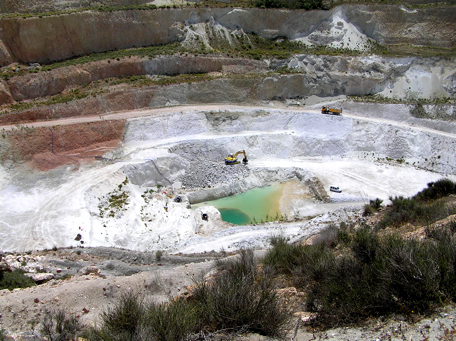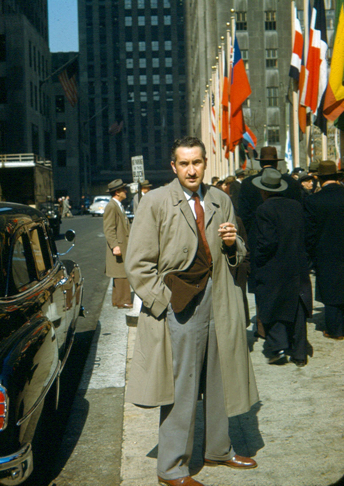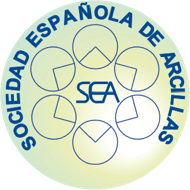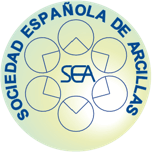
BEGINNINGS
The first scientific clay association in Spain was the Spanish Clay Minerals Group (Grupo Español de Minerales de la Arcilla, GEMA) founded in May 1959 as an affiliate of the Spanish Soil Science Society (Sociedad Española de Ciencia del Suelo). First President was Prof. V. Aleixandre, Director of the Institute of Ceramic and Glass, CSIC, and Secretary, Prof. J.L. Martín-Vivaldi of the University of Granada. Other members of the GEMA Council were Prof. Taboadela of the University of Santiago, Prof. Gonzalez-García of the University of Seville and Prof. Castell-Landete of the University of Valencia.
AN INDEPENDENT SOCIETY
In the years following the foundation, the activity of GEMA was limited to informing its members of scientific meetings related to clay research, but no national meetings were organized. The first national meeting of GEMA took place on May 13-14, 1969. At this meeting it was decided to create the independent society Sociedad Española de Arcillas, SEA (Spanish Clay Society), and Prof. J.L. Martín-Vivaldi was elected as first president of the new society.
The aim of the new society was the introduction of Spanish clay scientists into international organizations by promoting contacts with other national groups and the organization of scientific meetings of a supranational character.

FIRST MEETINGS
Immediate actions to accomplish that objective were: a) the organization, thanks to the initiative of Professors J.J. Fripiat and J.M. Serratosa, of a Spanish-Belgian clay meeting as a basis for the establishment of the European Clay Meetings (Euroclay Conferences). This meeting, known as the First Euroclay Conference or Euroclay70, took place in Madrid, June 1-3, 1970, with participation of scientists from other European countries and the USA. A second meeting (Euroclay71) was held in June 1971 at the University of Louvain (Belgium). It was decided to submit a proposal to the AIPEA Council for the celebration of the IV International Clay Conference in Spain. The Conference took place in Madrid, June 23-30,1972, under the guidance of Prof. E. Gutierrez-Ríos as Chairman, Prof J.L. Martín-Vivaldi as Secretary, and the President of the AIPEA, Prof. F.V. Chukhrov (USSR).
CONSOLIDATION OF THE SOCIETY
In the following years, the SEA consolidated its role as the scientific society responsible for the dissemination and promotion of knowledge and research in the field of clays in Spain. The SEA has organized regular national meetings and actively participated in international meetings, and is a member of the European Clay Groups Association (ECGA) and the Association Internationale pour l’Etude des Argiles (AIPEA). It is one of the co-publishing societies of the Clay Minerals journal. A commemoration of the 50th anniversary of its founding was held on November 19, 2009, in Madrid. As a scientific society of notable international standing, the high point of the SEA’s trajectory was the organization in Granada of the 16th International Clay Conference in 2017, “Clays, from the Oceans to Space”, with more than 700 participants.
Other meetings of supranational character organized or co-organized by the SEA have been:
- “I Reunión Iberoamericana de Arcillas” in collaboration with “Sociedad Española de Cerámica y Vidrio” (Spanish Society of Ceramic and Glass), Torremolinos (Málaga) 7-11, June, 1982.
- First Italian-Spanish Congress on Clay Minerals, Seiano di Vico Equense and Amalfi (Italy), 24-28 September 1984.
- Euroclay’87, 6th Meeting of the European Clay Groups, Seville, 7-10 September 1987, under the chairmanship of Prof. E. Galán.
- “Reuniao Luso-Espanhola de Argilas”, Aveiro (Portugal), 29-31 March,1989.
- Israeli-Spanish Workshop on Organo-Clays: Structure, Properties and Uses. Ein Gedi (Israel), 12-14 February, 1995.
- II Spanish-Italian Meeting on Clays. Granada 19-21, September 1996.
- The Japan-Spain Workshop on Organic-Inorganic Hybrid Materials Based on Clays, Toyota Research Center, Nagoya (Japan), 30th August 2005.
Other international activities of the SEA have been:
- The establishment of the Martín-Vivaldi Award, in honor of Prof J.L. Martín Vivaldi, created by SEA in 1988 as an award for young Spanish clay scientists. In 1990 it became a European Award, sponsored by the European Clay Group Association (ECGA) and financially supported by SEA.
- Support for the initiative of Prof. J.M Serratosa, at that time (1989-1993) President of AIPEA, to establish the AIPEA Medals to honor active clay scientists in recognition of outstanding contributions to clay science. The AIPEA Medals are sponsored and financially supported by TOLSA SA, a clay products company and member of SEA.
- Support for the Peace Campus Program, established in 1993 by the European Union, through the participation and leadership of Professors J.M. Serratosa and E. Ruiz-Hitzky in one of the five research projects included in that Program. The general objective of the European Union Peace Programs was to contribute to the establishment of peace in the Middle East Region by creating personal and intellectual interplay among the people of the Region through the development of R+D projects in areas of common interest. Countries that participated in the project coordinated by Spanish scientists were: Egypt, Gaza Strip, Germany, Israel, Jordan and Spain.
- The establishment of the José María Serratosa Award in 2017. On the occasion of the celebration of the 16th International Clay Conference in Granada, SEA established this international award for young scientists, in honor of Prof. J.M. Serratosa.
 English
English Español
Español
